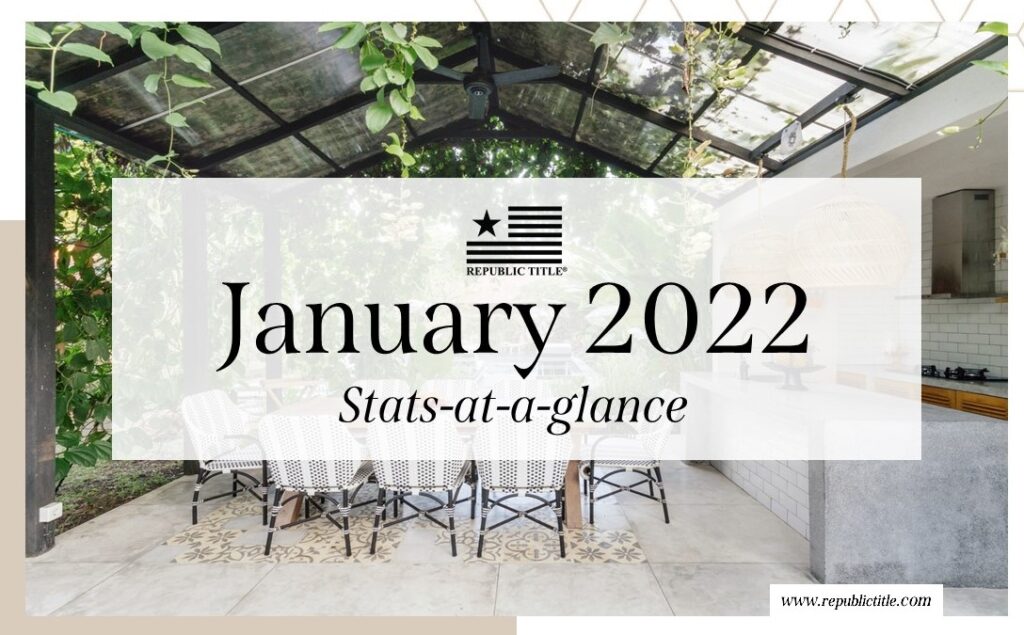
Texas Housing Insight November 2021
Texas’ housing market continued to rise in November, trending upward despite ongoing supply constraints. Months of inventory slid to 1.5 months, and single-family permits weakened.

Texas’ housing market continued to rise in November, trending upward despite ongoing supply constraints. Months of inventory slid to 1.5 months, and single-family permits weakened.

January stats are here and we have the numbers! Our stats infographics include a year over year comparison and area highlights for single family homes and condos

Republic Title is pleased to announce the promotion of Samantha Lipton to Branch Manager of our Southlake office. “We are excited to announce that Samantha

Need help planting a successful garden or landscape? Here are some February planting tips from the Dallas Arboretum horticulture staff and the Dallas County Master Gardeners

Republic Title is pleased to offer a variety of continuing education classes for our customers. Join us in February for classes including: Create Gorgeous Visual
© COPYRIGHT 2021 REPUBLIC TITLE
CORPORATE OFFICE – 3033 W. PRESIDENT GEORGE BUSH HIGHWAY, SUITE 300 – PLANO, TEXAS 75075
(972) 578-8611